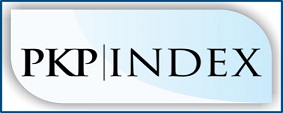Strategi dalam Berpikir Kreatif Matematis pada Masalah Bangun Datar
Abstract
Kemampuan berpikir kreatif matematis merupakan kompetensi penting abad ke-21 yang meliputi aspek kelancaran, fleksibilitas, dan orisinalitas dalam menyelesaikan masalah. Namun, berbagai studi menunjukkan bahwa siswa masih mengalami hambatan dalam mengembangkan ketiga aspek tersebut. Mengkaji strategi yang digunakan siswa dalam berpikir kreatif pada konteks bangun datar penting dilakukan agar dapat teridentifikasi bagaimana siswa mengembangkan ide, berpindah antar strategi, dan menghasilkan solusi baru, sehingga dapat dirancang intervensi pembelajaran yang lebih efektif untuk mendukung kemampuan berpikir kreatif matematis siswa. Penelitian ini bertujuan untuk mengeksplorasi strategi berpikir kreatif matematis siswa dalam menyelesaikan masalah bangun datar. Pendekatan kualitatif dengan desain studi kasus digunakan untuk memahami proses berpikir siswa secara kontekstual dan mendalam. Partisipan terdiri dari 27 siswa kelas VIII SMP di Pekanbaru yang telah menerima pembelajaran tentang luas bangun datar. Data dikumpulkan melalui tes berpikir kreatif matematis dan wawancara berbasis tugas, kemudian dianalisis menggunakan model analisis interaktif Miles dan Huberman. Hasil penelitian menunjukkan bahwa strategi siswa pada aspek kelancaran mencakup penggunaan representasi beragam, eksplorasi pendekatan, dan identifikasi pola. Strategi siswa pada aspek fleksibilitas ditunjukkan melalui perubahan pendekatan konseptual dan penggabungan metode. Strategi siswa pada aspek orisinalitas tampak dalam penggunaan pendekatan tak biasa, modifikasi masalah, serta representasi visual yang unik.
Downloads
References
Akpur, U. (2020). Critical, Reflective, Creative Thinking and Their Reflections on Academic Achievement. Thinking Skills and Creativity, 37, 100683. https://doi.org/10.1016/j.tsc.2020.100683
Azmi, M. P., Purwanto, P., Anwar, L., & Muksar, M. (2025). Epistemological Obstacles in Solving 2D Geometry Problems Using Adversity Quotient. TEM Journal, 14(1). https://doi.org/10.18421/TEM141-19
Bicer, A., Lee, Y., Perihan, C., Capraro, M. M., & Capraro, R. M. (2020). Considering mathematical creative self-efficacy with problem posing as a measure of mathematical creativity. Educational Studies in Mathematics, 105(3), 457–485. https://doi.org/10.1007/s10649-020-09995-8
Boccia, M., Piccardi, L., Palermo, L., Nori, R., & Palmiero, M. (2015). Where do bright ideas occur in our brain? Meta-analytic evidence from neuroimaging studies of domain-specific creativity. Frontiers in Psychology, 6, 1195. https://doi.org/10.3389/fpsyg.2015.01195
Chamberlin, S. A., & Moon, S. M. (2005). Model-Eliciting Activities as a Tool to Develop and Identify Creatively Gifted Mathematicians. Journal of Secondary Gifted Education, 17(1), 37–47. https://doi.org/10.4219/jsge-2005-393
Chassell, L. M. (1916). Tests for originality. Journal of Educational Psychology, 7(6), 317–328. https://doi.org/10.1037/h0070310
Chesimet, M. C., Githua, B. N., & Ng’eno, J. K. (2016). Effects of Experiential Learning Approach on Students’ Mathematical Creativity among Secondary School Students of Kericho East Sub-County, Kenya. Journal of Education and Practice, 7(23), 51–57.
Creswell, J. W., & Creswell, J. D. (2017). Research design: Qualitative, quantitative, and mixed methods approach. Sage publications.
Davis, R. B. (with Internet Archive). (1984). Learning mathematics: The cognitive science approach to mathematics education. Norwood, N.J.: Ablex Pub. Corp.
Guilford, J. P. (1967). The nature of human intelligence. New York: Macgraw Hill.
Haylock, D. (1997). Recognising mathematical creativity in schoolchildren. ZDM–Mathematics Education, 29(3), 68–74.
Hensley, N. (2020). Educating for sustainable development: Cultivating creativity through mindfulness. Journal of Cleaner Production, 243, 118542. https://doi.org/10.1016/j.jclepro.2019.118542
Hilmi, Y., Juandi, D., & Usdiyana, D. (2021). Students’ difficulties in solving mathematical creative thinking problems on derivative application. Journal of Physics: Conference Series, 1806(1), 012062. https://doi.org/10.1088/1742-6596/1806/1/012062
Huang, P.-S., Peng, S.-L., Chen, H.-C., Tseng, L.-C., & Hsu, L.-C. (2017). The relative influences of domain knowledge and domain-general divergent thinking on scientific creativity and mathematical creativity. Thinking Skills and Creativity, 25, 1–9. https://doi.org/10.1016/j.tsc.2017.06.001
Kozlowski, J. S., Chamberlin, S. A., & Mann, E. (2019). Factors that influence mathematical creativity. The Mathematics Enthusiast, 16(1), 505–540. https://doi.org/10.54870/1551-3440.1471
Krutetskii, V. A. (1976). The Psychology of Mathematical Abilities in Schoolchildren. University of Chicago Press.
Leikin, R. (2009). Exploring mathematical creativity using multiple solution tasks. In Creativity in mathematics and the education of gifted students (pp. 129–145). Brill. https://doi.org/10.1163/9789087909352_010
Leikin, R., & Lev, M. (2007). Multiple solution tasks as a magnifying glass for observation of mathematical creativity. Proceedings of the 31st International Conference for the Psychology of Mathematics Education, 3, 161–168.
Lin, W.-L., & Shih, Y.-L. (2022). Developmental trends of different creative potentials in relation to adolescents’ critical thinking abilities. Thinking Skills and Creativity, 43, 100979. https://doi.org/10.1016/j.tsc.2021.100979
Mann, E. L. (2005). Mathematical creativity and school mathematics: Indicators of mathematical creativity in middle school students. University of Connecticut.
Miles, M. B., & Huberman, A. M. (1994). Qualitative data analysis: An expanded sourcebook. sage.
Partnership for 21st Century Skills. (2009). P21 framework definitions. Pearson.
PISA, O. (2019). Creative Thinking Framework. OECD: Paris, France.
Rominger, C., Papousek, I., Weiss, E. M., Schulter, G., Perchtold, C. M., Lackner, H. K., & Fink, A. (2018). Creative Thinking in an Emotional Context: Specific Relevance of Executive Control of Emotion-Laden Representations in the Inventiveness in Generating Alternative Appraisals of Negative Events. Creativity Research Journal, 30(3), 256–265. https://doi.org/10.1080/10400419.2018.1488196
Saavedra, A. R., & Opfer, V. D. (2012). Teaching and learning 21st century skills: Lessons from the learning sciences. A Global Cities Education Network Report. New York, Asia Society, 10, 2012.
Silver, E. A. (1997). Fostering creativity through instruction rich in mathematical problem solving and problem posing. ZDM–Mathematics Education, 29(3), 75–80. https://doi.org/10.1007/s11858-997-0003-x
Siswono, T. Y. E. (2010). Leveling Students’creative Thinking in Solving and Posing Mathematical Problem. Journal on Mathematics Education, 1(1), 17–40.
Siswono, T. Y. E. (2011). Level of student’s creative thinking in classroom mathematics. Educational Research and Reviews, 6(7), 548.
Siswono, T. Y. E. (2018). Pembelajaran matematika berbasis pengajuan dan pemecahan masalah. Bandung: Remaja Rosdakarya.
Sitorus, E. N., Sinaga, B., & Dewi, I. (2019). Analysis of The Difficulties of the Mathematical Creative Thinking Process in Problem Based Learning. 4th Annual International Seminar on Transformative Education and Educational Leadership (AISTEEL 2019), 467–473.
Sriraman, B. (2004). The characteristics of mathematical creativity. The Mathematics Educator, 14(1).
Sriraman, B. (2005). Are Giftedness and Creativity Synonyms in Mathematics? Journal of Secondary Gifted Education, 17(1), 20–36. https://doi.org/10.4219/jsge-2005-389
Sriraman, B. (2009). The characteristics of mathematical creativity. ZDM, 41(1–2), 13–27. https://doi.org/10.1007/s11858-008-0114-z
Sriraman, B. (2017). Mathematical creativity: Psychology, progress and caveats. ZDM, 49(7), 971–975. https://doi.org/10.1007/s11858-017-0886-0
Sriraman, B., & Lee, K. H. (2011). The elements of creativity and giftedness in mathematics (Vol. 1). Springer Science & Business Media.
Sriwongchai, A., Jantharajit, N., & Chookhampaeng, S. (2015). Developing the Mathematics Learning Management Model for Improving Creative Thinking in Thailand. International Education Studies, 8(11), 77–87.
Torrance, E. P. (1974). Torrance Tests of Creative Thinking: Verbal Tests, Forms A and B, Figural Tests, Forms A and B. Xerox.
Weber, H., Loureiro De Assuncao, V., Martin, C., Westmeyer, H., & Geisler, F. C. (2014). Reappraisal inventiveness: The ability to create different reappraisals of critical situations. Cognition and Emotion, 28(2), 345–360. https://doi.org/10.1080/02699931.2013.832152
Yin, R. K. (2018). Case study research and applications (Vol. 6). Sage Thousand Oaks, CA.
Yusoff, W. M. W., & Seman, S. C. (2018). Teachers’ knowledge of higher order thinking and questioning skills: A case study at a primary school in Terengganu, Malaysia. International Journal of Academic Research in Progressive Education and Development, 7(2).
Copyright (c) 2025 Memen Permata Azmi

This work is licensed under a Creative Commons Attribution-ShareAlike 4.0 International License.



1.jpg)














